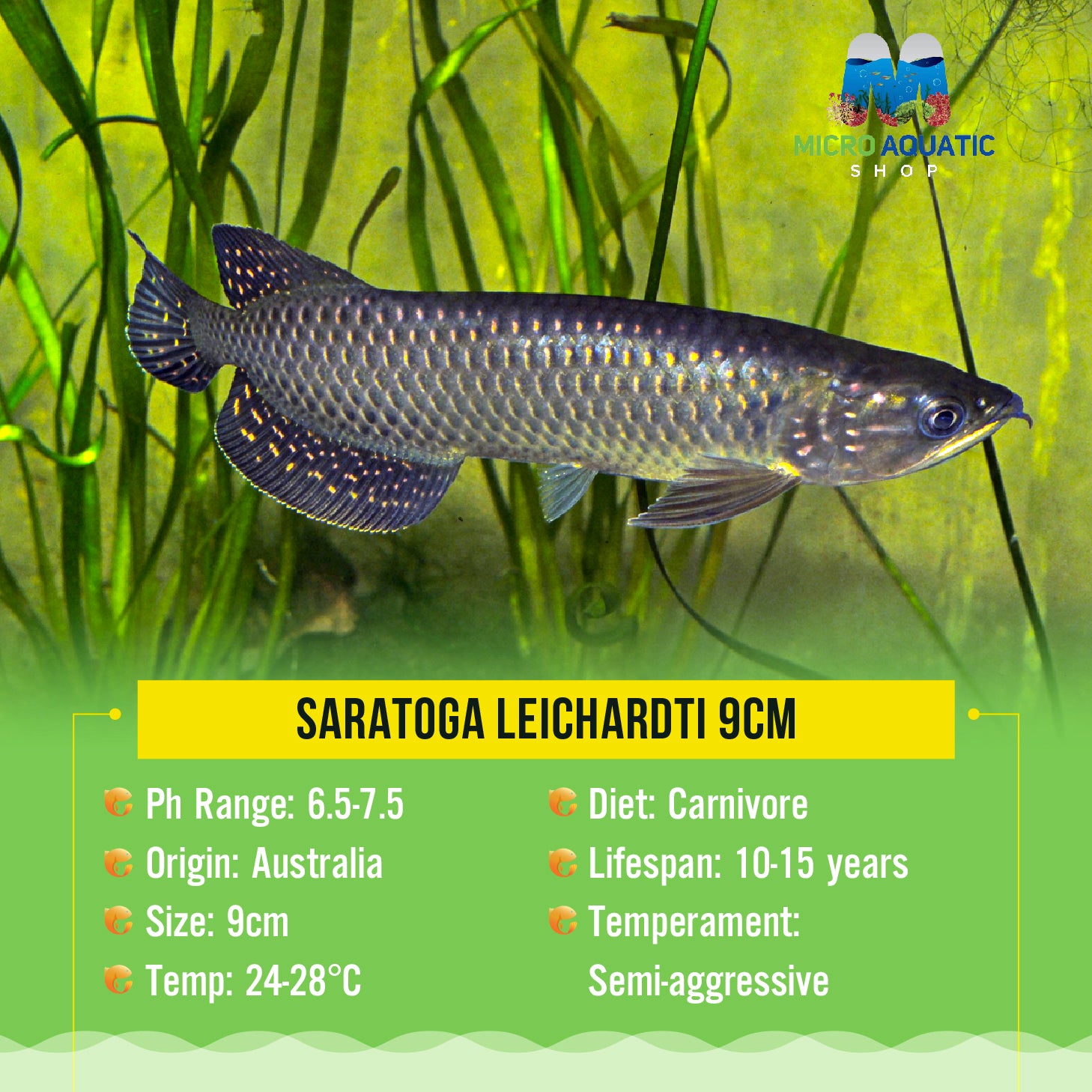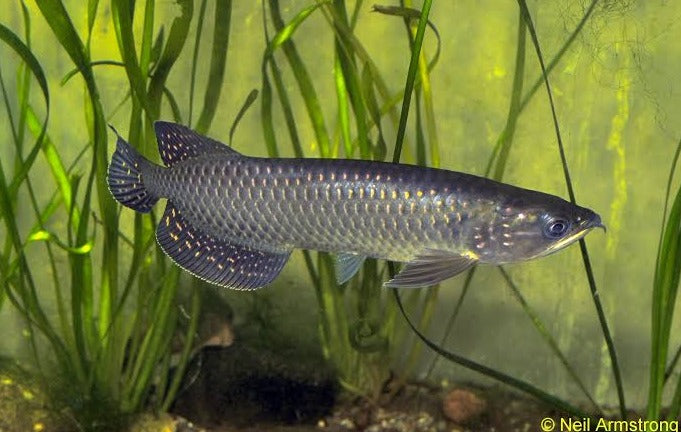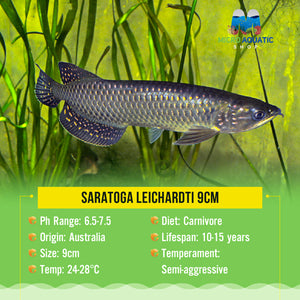SARATOGA LEICHARDTI 9cm
Guarantee Safe Checkout
SARATOGA 5CM NICE SIZE
The southern saratoga (Scleropages leichardti), also known as the spotted bonytongue, spotted saratoga, or simply saratoga, is a freshwater bony fish native to Australia. It belongs to the subfamily Osteoglossinae, or arowanas, a primitive group of teleosts. Like all arowanas, it is a carnivorous mouthbrooder. Along with the gulf saratoga (Scleropages jardinii), the saratoga is also known as the Australian arowana (mainly by non-Australian aquarists) and barramundi, although the latter name is nowadays reserved in Australia for the unrelated Lates calcarifer.
Description
Southern saratoga can grow up to 90 centimetres (35 in) 4 kilograms (8.8 lb). At sexual maturity, they are usually 48–49 centimetres (19–19 in) in length. They are primitive, surface-dwelling fish with strongly compressed bodies. They have an almost perfectly flat back, with a dorsal fin set back towards the tail of their long bodies. In colouration, they are dark brown to olive green along the back, with lighter sides and a white belly. The large, bony scales have small orange or red dots. The lower jaw slopes steeply upwards and carries two fleshy barbels on the chin.
Like all Scleropages, S. leichardti is a long-bodied fish with large scales, large pectoral fins, and small paired barbels on its lower jaw. Each scale on its dark coloured body has a red or pink spot; this feature distinguishes it from S. jardinii, which has several reddish spots on each scale in a crescent shape. S. leichardti is a slimmer fish than other Scleropages; a 90 centimetres (35 in) fish was weighed at only 4 kilograms (8.8 lb), compared to 17.2 kilograms (38 lb), for a S. jardinii of similar length. The depth of its body is 23-25% of its Standard Length, and it has fewer fin rays than S. jardinii. It is a popular aquarium fish, although it will eat other fish, shrimp, yabbies etc., that are in the tank.
Distribution and habitat
Southern saratoga are native to the Fitzroy River system.[1] They are commonly found in freshwater impoundments on the Mary, Dawson and Burnett rivers. Stocks have also been introduced to dams on the Brisbane, North Pine and Noosa Rivers. Southern saratoga prefer still waters and slow flowing sections of rivers and can be found sheltering in lily-pads or below fallen timber. They are very aggressive and territorial fish.
- Tank size Minimum: 150L
Limited Quantity Available - Will Sell out Fast!
Note:
We can’t ship Livestock and Live Plants to WA and TAS due to State Restrictions. Kindly check out our DOA and other policies before purchase!!
What to Expect from Us
All Aquatic plants and animals come with a 100% live arrival guarantee!!

| Size |
1 SARATOGA 9cm bigger size |
|---|




